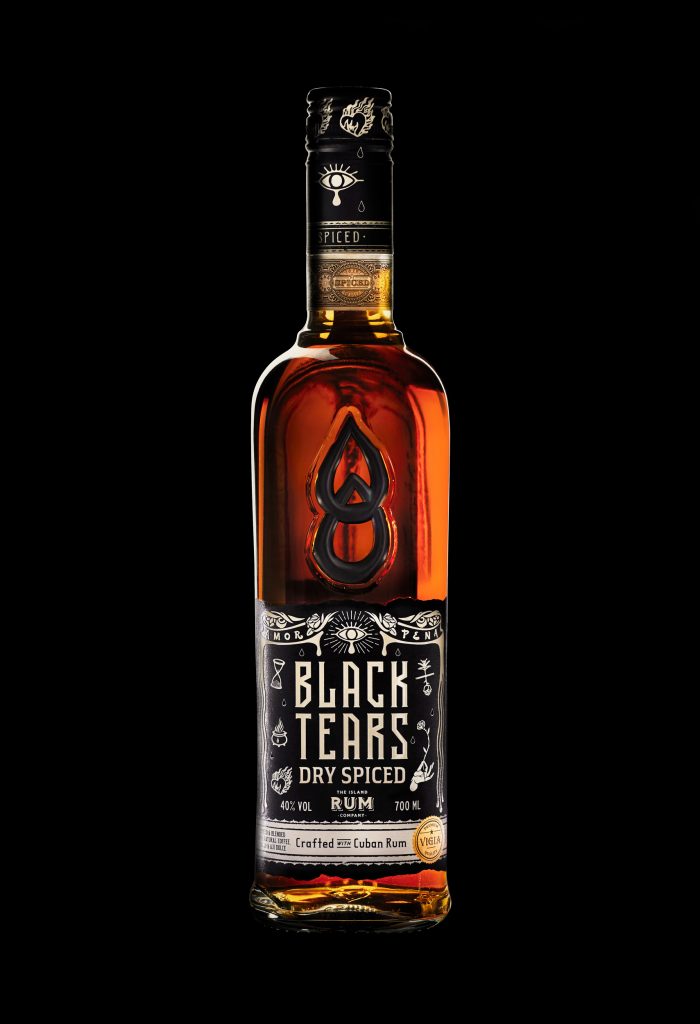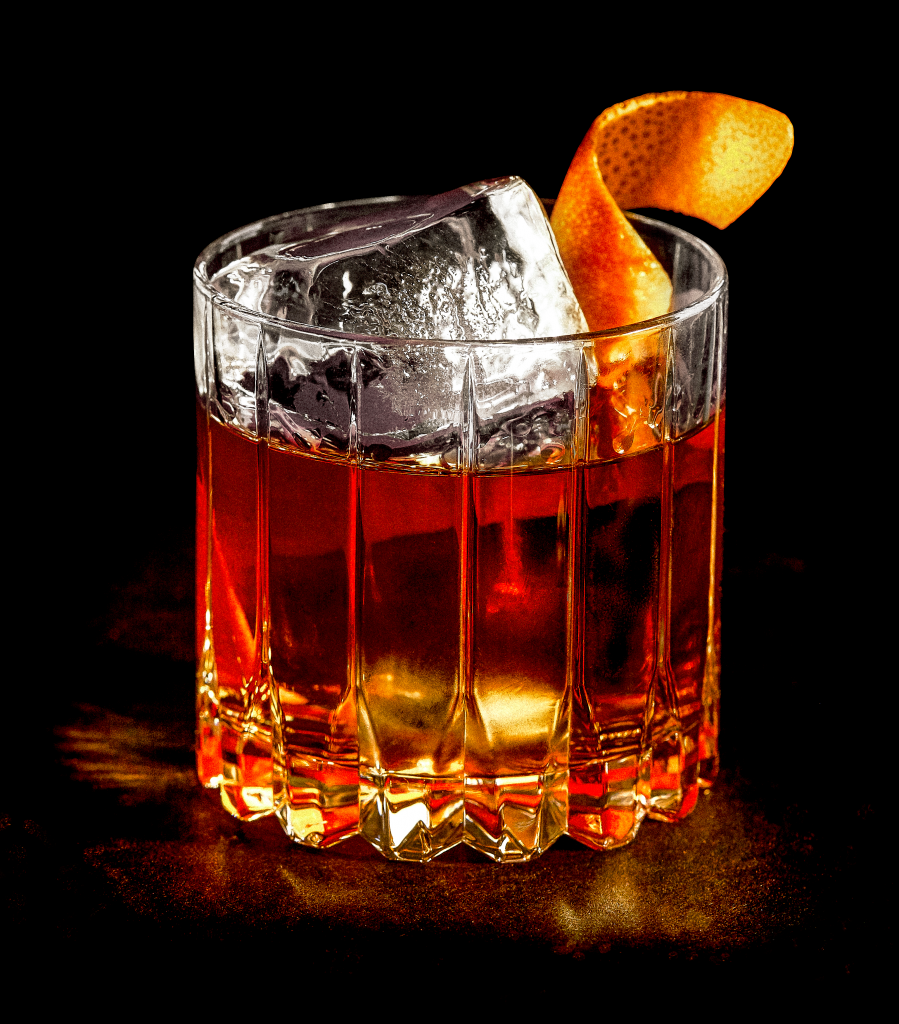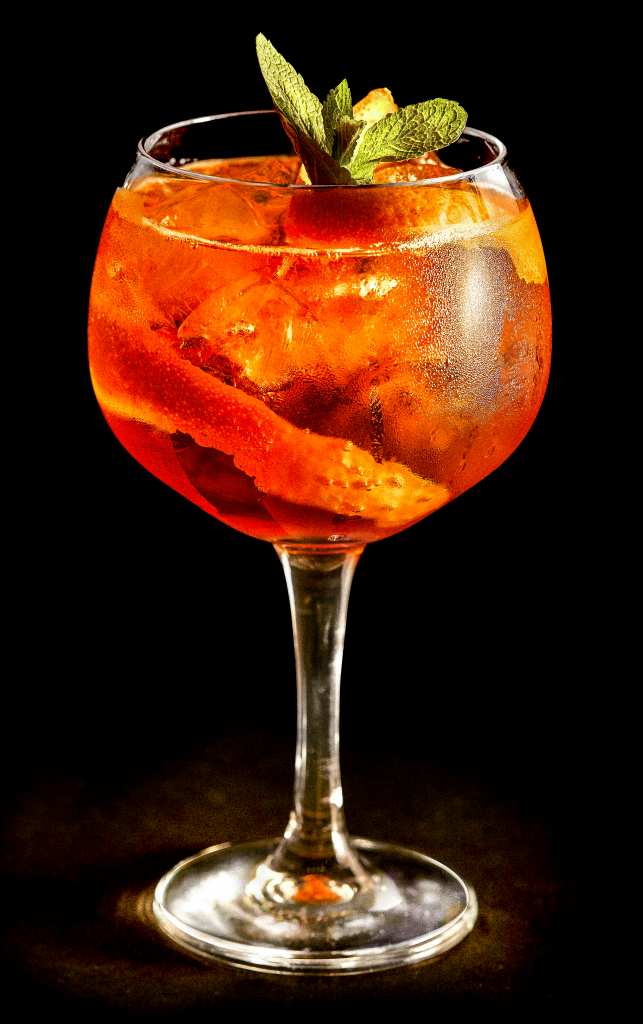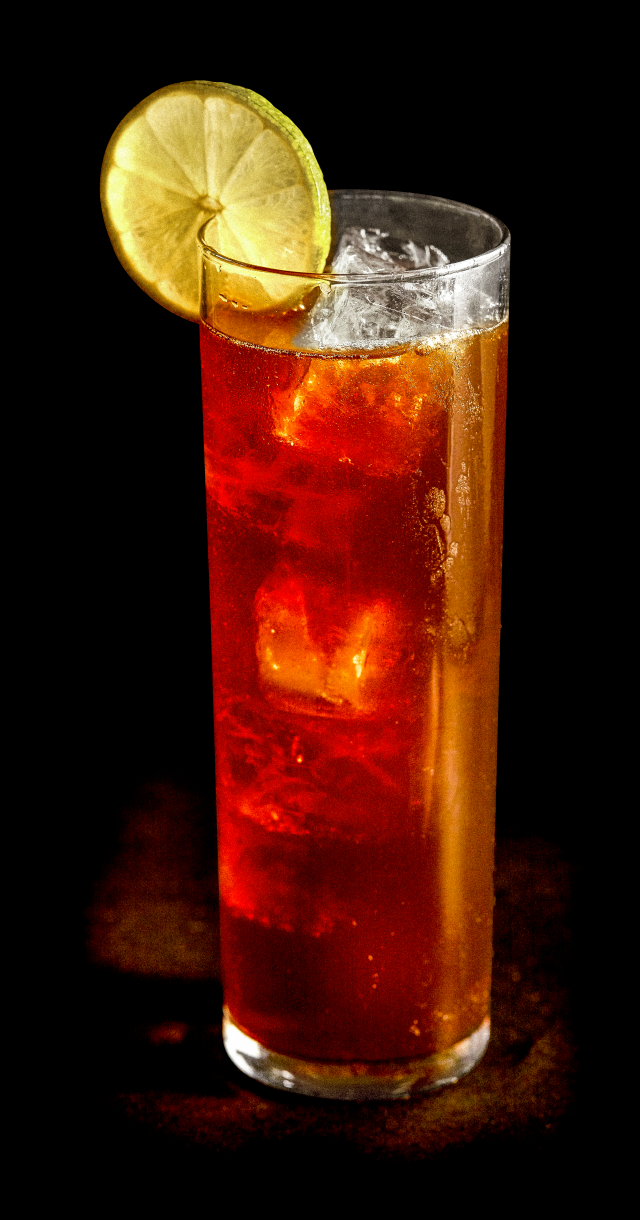
When it comes to spirit categories, rum is one of those that many might know of in the most basic sense. However, this category is wider and more complex than you think, from rum to spiced rum to cachaça. We speak to the highly knowledgeable Adéle Robberstad, CEO of Black Tears Cuban Spiced to demystify this curious spirit.

Adéle Robberstad, CEO of The Island Rum Company
Adéle Robberstad is the CEO of The Island Rum Company, which covers the ambits of Black Tears Cuban Spiced Rum and Ron La Progresiva, an aged Cuban rum, amongst others. She has been in the luxury and spirit industry including building brands such as Nordic artisanal water Voss, congac-based liquor Xante, and Cherry Heering before.

Can you briefly introduce yourself?
So here we go. An odd bird in this industry where I have lived my life the last 25 years, walking the streets around the world, more lifestyle than a job in many ways, all about people. Can’t believe it’s that long. So, I see myself not as a rum expert but a global brand builder. Building global premium/ luxury brands around the world, starting up in the cosmetic industry, that do for sure have a lot of similarities with our industry. My first brand in this industry was with Voss water, a luxury, super premium, artesian, water from Norway with a nice story. Somebody said: – you are working your way up from water till today 41% Abv. I was the director of Europe and Russia for Voss and since the route to market is the same for water as for liquors many of my partners of today +20 years later are the same. That is one of the reasons we were able to launch Black Tears into 37 countries during the pandemic. Now is my fourth round in this industry to build a global brand. Everybody thinks that building a spirit brand takes no time, that a spirit brand is a FCOG (fast consumer goods). Most of the great brands you see in the market that has been around for many years, before they become a global brand. To mention a few, Jägermeister, Patron, Hendricks, Martin Millers Gin, they have been into the market for decades before they took off, sometimes 20-30 years or even more. Xante, a cognac-based liquor, most famous in the Nordic as “Päronkonjak”, pear cognac, a market leader in the Nordics, a 50/50% joint venture between the Swedish government Vin & Sprit (more famous as the Absolut company) and the Xante company, which I was heading up at that time. We sold that company to the Finnish Government Alta 2012 and today Xanté is one of their top brands. Cherry Heering will always be my baby. We acquired the brand from V&S Company before it all became Pernod Ricard, and we rebuilt the brand from being almost gone into +100 countries in 10 years and sold it to De Kuyper 2018. A fantastic brand and the main component in some of the classic cocktails such as Singapore Sling, Remember the Main, Blood and Sand. I am still very proud when I am walking into a bar somewhere in the world and the bottle sit at the shelf.

Please share with us a little bit about Black Tears Spiced Rum.
The first spiced rum out of Cuba in 400 years, real rum 40% Abv, 2 years old, Cuban styled, light, sophisticated, low on sugar, dry and some amazing flavors such as Cuban coffee, cacao and aji dulce (sweet pepper). It took some years for us to have the spiced approved by the Cuban Government. The name comes from one of the most famous songs in Cuba, a song composed 1929 by the Cuban composer and singer Miguel Matamoros Lagrimas Negras = Black Tears and has this amazing love story, amore…. this woman crying black tears…. today interpreted into over 4000 versions and for the Cubans – a national treasure. The rum is very much like the song, a mixed of different flavors that plays with your pallets, starting with the cacao and the coffee and ends in a very long symphony of flavors, sweet but dry …. When you mix it with something bitter, sweet or sour you get an a orchestra of flavors.

What is rum made from?
Here I think there is a lot of confusion for end consumer. People knows it’s made with sugar, but then we are talking about rum being low on sugar. How does that work? This is a question I get from people. What is the difference between sugarcane juice and sugar molasses? Each region has their own style, laws, and regulation of making rum. So has whiskey. There are no global roles for rum or whiskey production but for sure there are rules and regulations for each area.
In Brazil you have the famous Cachaça that most people have heard about, a distinctly Brazilian product, distilled from fermented sugarcane juice. Rum can also be made from sugarcane juice, but most is distilled from molasses. The type of rum made from sugarcane juice is known as Rhum Agricole and is therefore a closer stylistic match to cachaça. In both, you’ll find more of a range of grassy and vegetal flavors, with a distinctive funkiness. You see they are very much relatives or even cousins.
Another point of distinction for cachaça is the range of woods now being used to age it and give it different flavors. Most rum is aged in former bourbon barrels constructed from American oak. Ex-sherry casks and assorted other varieties are also put to work, as are Scotch whisky barrels.
With cachaça though, indigenous Brazilian hardwoods are also being deployed, creating an entirely unique flavor influence that is not currently found in any other spirits. For instance, there’s the heavy spice influence of Amburana wood, and the nutty-fruity combination offered by Para. Other varieties to mention include Zebrawood, Cabreuva, Balm, and half a dozen more for good measure.
Cachaça can only be made in Brazil, whereas rum can be made anywhere in the world. They are both offshoots in the realm of cane-based spirits, and both can be aged or left unaged. Each has its own lengthy, and separate history.

What are the different styles of rum what makes them different?
We generally consider 3 styles of rums, making a reference to old colonies and their parent country: –
- English style like in Barbados, Jamaica, and Guyana, where the rum is made from molasses and where both pot and column stills are used.
- French style in Martinique, Guadeloupe and even Reunion islands recognized for their Rhum Agricole, made from fresh pressed cane juice and column distilled. Their grassy, vegetal flavors are immediately recognizable and their ABV is way higher than molasses-based rum (60% or higher ABV rums);
- Spanish style like in Cuba, Puerto Rico, Dominican Republic or even in Venezuela, Colombia, Guatemala is known for their molasses-based, column distilled, charcoal filtered rums. Some producers even practice the technique of solera aging, originally invented as a way of aging sherry (and now, rum) in their Spanish motherland.
More specifically, Cuban rum is highly regulated and controlled by Cuban state. Therefore, a series of norms and rules have been implemented over the years to improve the process and enhance Cuban rum specificities. The main one is in the Aguardiente we age and use as the ‘madre’/mother of our blends. If we use fine alcohol at 96% ABV, the uniqueness of Cuban rum comes from the use and ageing of the Aguardiente, distilled from Cuban molasses but only at 74 to 76% ABV, and with totally different organoleptic profile. The difference between 2 main liquids used to make Cuban rum begins with fermentation: the process is different in timing, temperature control and mix of yeast. Then, only the Aguardiente is aged for a minimum of 2 years in white oak barrels, generating what we call the ‘madre’. This ‘madre’ is then blended with fine alcohol and the resulting blend is re-casked for additional ageing, creating the ‘ron base’. Depending on the proposed maturation scheme, the ‘ron base’ may be blended with alcohol several times and re-casked each time for additional ageing. Only when a barrel’s contents reach sufficient maturity does the rum maestro blend it with other aged bases to create the final bottling blend.

What is the philosophy behind the spiced rum that you produce?
The story of Black Tears Dry Spiced is rooted in Cuban music, specifically a bolero- son about love and loss called Lagrimas Negras, which means Black Tears. Written in 1929 by Cuban composer and singer Miguel Matamoros, and recorded by luminaries like Celia Cruz and Company Segundo, it has been one of Cuba’s most famous songs for many Cuban generations. Just like “Lagrimas Negras”, Black Tears is crafted to honor those who dedicate their lives to express their true emotions. Good and bad, love and loss – for Cubans. These are all a part of the bittersweet taste of Black Tears. Cubans never know what struggles a new day may bring, so they take life as it comes, holding nothing back. They live with their whole heart, experiencing love and loss together en la ‘lucha’ – the fight. Hold nothing back.

Uninitiated rum drinkers tend to think that rum is sweet. What are your thoughts about this?
Indeed, there are many differences in sugar level in rums, but EU regulation defines a threshold of 20g/liter to characterize a sugarcane distilled spirit as a rum. Cuban rum tradition is even below that limit, generally under 10g/liter, preserving the characteristics of the ageing process and the organoleptic properties of the different blends chosen by the Master Blender. As Cuban rums, both our products have very small amount of sugar: Black Tears contains 9g/liter and La Progresiva , 5,5g/liter, following the century long tradition of making Cuban rum. That’s the richness of Cuban rum: only rum and not much sugar. Nothing is added during the ageing process, that’s strictly prohibited. The main source of sweetness is coming from the barrels and that’s why we select them carefully and have our own in-house cooper to take care of them as long as we can in order to extract their best flavor’s. Our barrels are very old and many of them from before the prohibition time.

What are some common misconceptions about rum?
Generally spiced rums are not considered as rum by legislation in many countries, like in the European Union for instance. Because this is not a legal category, its definition is quite loose and consumers can find many kinds of liquids, from very sweet (no control of sugar level) to many added spices more or less natural. We are using 100% handcrafted Cuban rum, 40% ABV and decided to be very strict on sugar level, way below EU requirements for rums approving 20g/liter: Black Tears Dry Spiced has only 9g/liter which makes it quite unique in its category. This enhances the taste of the spices and sticks to traditional Cuban way of making rum, very dry and light.

Do you think geographical indicators (GI) are essential for this spirit category?
Yes, it is very essential as it recognizes the specificities of the production process that makes the product unique and different from one country to another. More and more countries have adopted geographical indication for their rum, such as Martinique rums and their AOC (‘Appellation d’Origine Controlee”), Guatemala rum especially pushed by Zacapa brand and even Cuba has registered a DOP, Protected Designation of Origin literally back in 2013, regulated by a set of 35 articles that define how Cuban rum is made, including source material, distillation aging practices and labelling requirements. Cuba has also applied to register its rum in UNESCO World Patrimony in 2022, thus recognizing the know-how of Cuban maestros and century experience in making a unique liquid from molasses.

What sets Black Cuban Spiced rum apart from other spiced rums?
Black Tears Dry Spiced is distilled from exceptional molasses, sourced from four mills in the province of Ciego de Avila, near Cuba’s northern coast. Black Tears Dry Spiced is then spiced with coffee and cacao, which have flavored the history of Cuba itself, and infused with ají dulce, the sweet pepper, and one of the most distinctive tastes in Cuban cuisine. The irresistible, bittersweet taste of Black Tears—and its low sugar content—sets it apart from other spiced rums.
Moreover, Black Tears has earned the seal of high-quality rum – the Vigía seal – acknowledging the excellence and passion in the production process. The seal was developed by ICIDCA for Vigía, one of the finest, high-quality rums in Cuba, mostly given away to head of states visiting, to reflect the scrutiny and the approval process every product Vigía has to have. It is just to confirm that the product has passed their scrutiny. Vigía has imposed upon itself a quality threshold which is unique and underwrites the blending capabilities of the Vigía team. ICIDCA has a sensory panel of very qualified pallets and noses that reviews every, Cuban rum getting out of the island so also their own brand Vigía. Cuban rum has very strict regulations about rum and production of Cuban rums.

You also produce La Progresiva, an aged rum. Can you tell us a bit about this aged rum?
La Progresiva de Vigía is made from 2 different “ron base” that have been aged different amount of time. One of this ‘base’ is very much aged, more than 13 years and that’s what gives all the wooden notes. The liquid is aged in our barrels in our ageing cellar, at the darkest place in it to keep as maximum liquid over time as possible. Every product is finetuned by our Cuban Master Blender after years of development looking for the best taste and innovative formulation in order to reveal the fine treasures of our ageing cellar in Ciego de Avila, in Cuba, to the world.

What does the year on the bottle actually indicate?
Mezcla 13 on the bottle means it was blended from different ‘ron base’ or blends and the number 13 actually came from the number of the sample chosen by the Master Blender for this product and considerations about the age of the ‘ron base’ mostly used in final blend. After many formulations and selection of the best ‘ron base’, she decided to create La Progresiva Mezcla 13 out of 2 different “ron base” that have been aged different amount of time. One of this ‘base’ is very much aged, more than 13 years and that’s what gives all the wooden notes. The liquid is aged in our barrels in our treasure ageing cellar, at the darkest place in it to keep as maximum liquid over time as possible.

Can you share with us your favourite cocktail recipe made using Black Tears?
I would for sure make a simple Daiquiri, only lime a little bit of simple syrup and Black Tears but you can mix almost everything with Black Tears and it’s very good with ginger beer, cola, tonic, cranberry.
| PHOTOGRAPHY: THE ISLAND RUM COMPANY | WEBSITE: BLACK TEARS |